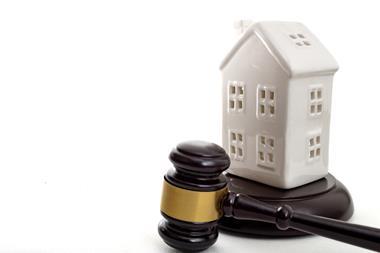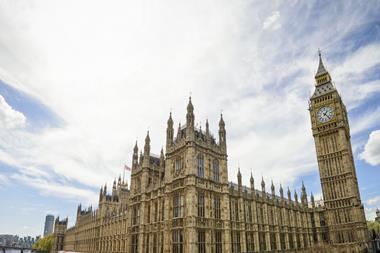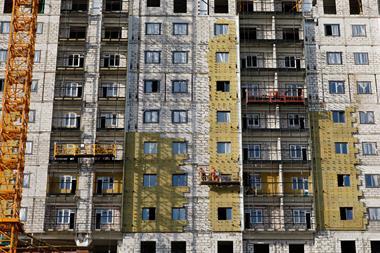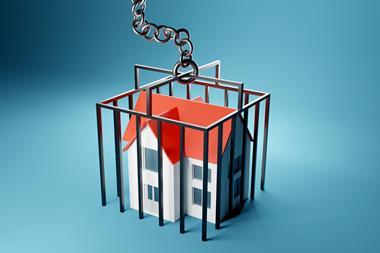The Bill has received mixed reception, some see it as a “next step” whereas others have deemed it an “an assault on leaseholders”
The UK government will be “speeding up” its work with the insurance industry in a bid to protect leaseholders from unaffordable costs of fixing historic defects.
It claims that it will do this without relying on taxpayers’ money.
This is according to the government’s draft Building Safety Bill 2020 published on 18 July, which intends to improve building and fire safety.
It aims to make all high-rise buildings over 18 metres in height in England safer following the Grenfell Tower fire on 14 June 2017 which claimed 72 lives.
The government will therefore be addressing insurance issues around building safety via a new ‘building safety charge’ that claims to make it easier for leaseholders to see what they are being charged for.
However, the draft bill has received a mixed reception from the insurance industry.
Height accommodating
While Zurich and the ABI have welcomed the draft building bill as a “step forward”, both have agreed that extending the height to accommodate all buildings would be better.
The ABI’s director of General Insurance policy, James Dalton, said that the published draft Bill is a “significant step towards ensuring that building regulations are up-to-date and fit for purpose”.
Dalton believes it will provide much-needed clarity to all those involved by making sure that people living in high-rise buildings are safe.
“We would urge government, however, to extend the Bill to encompass buildings of any height accommodating vulnerable people,” he added.
Meanwhile, Zurich’s head of housing, Allison Whittington, said: “It is essential that all buildings are safe. As the Bill currently stands only buildings over 18m or six storeys are in scope and we urge the government to expand the scope of the Bill to include all construction in the UK.”
‘Light touch enforcement’
Whittington added: “Growth in the use of Modern Methods of Construction (MMC) have transformed the way in which the UK’s building stock responds to fire and other peril events. Poor workmanship and light-touch enforcement of building regulations have frequently resulted in buildings that offer poor levels of fire protection and Zurich has long called for building safety reforms to ensure that robust procedures across the design, construction, and inhabitation phases are in place to better protect residents in all types of develpments, not just high-rise residential buildings.”
She said the accompanying consultation on fire-safety reforms is “key to ensuring that the legislation is successful in protecting both lives and properties and Zurich looks forward to submitting evidence to support this process”.
Meanwhile the Home Office has also announced a consultation on fire safety to implement the recommendations of the Grenfell Tower Inquiry, and to improve and strengthen the fire safety framework alongside the measures within the draft Bill.
What else does the draft Building Safety Bill 2020 include?
The government is also deliberately applying powers to limit the costs that can be charged to leaseholders.
New build homebuyers will now also have the right to complain to a New Homes Ombudsman, be protected in legislation and developers will be required to be a member of the scheme.
Residents and leaseholders will have access to vital safety information about their building and new complaints handling requirements will be introduced.
And there will be someone held accountable for the safety of residents whose mission it is to put any mistakes right.
It will also establish a regulator that will enforce the new rules and come down on those who go against them. The regulator will oversee safety standards of all buildings, assure building safety and improve the competence of people responsible for managing and overseeing building work.
‘Assault on leaseholders’
A Twitter poll by the Building Safety Register revealed that over 90% thought the Bill was an “an assault on leaseholders”.
Whereas only some thought is was “good in parts” and again a small percentage thought it was “awesome work”.
24 Hours after publication of the draft #BuildingSafety Act 2020. Tell us your thoughts, vote, RT: @brumlag @NLC_2019 @ukcag @SteveMcfirerisk @LKPleasehold
— Building Safety Register (@BldgSafetyReg) July 21, 2020
The Building Safety Register was set up by Matt Hodges-Long as a brand of insurtech TrackMyRisks, of which Hodges-Long is the chief executive and co-founder. The Building Safety Register is about to be spun out as a not-for-profit due to demand from other firms and practitioners getting involved.
Hodges-Long described the Bill publicly as an “assault on leaseholders”.
“In essence the imposition of the Building Safety Charge pushes the full cost of building safety works on to the leaseholders, who have little or no right to reply or challenge,” he told Insurance Times. “Some parts of the Bill are good in relation to registration of professionals and the requirement for a Building Assurance Certificate for all high-rise buildings. The drafting looks rushed to get it published prior to the summer recess.”
Hodges-Long has written to the Building Safety Minister regarding this and expects significant amendments in the Autumn.
Brokers are essential
Prior to the Bill’s publication, nearly 200 leaseholders joined the UK Cladding Action Group’s London virtual event where they were joined by Biba, the deputy mayor of London for housing and residential development, E&M Asset Management and The Leasehold Knowledge Partnership.
Biba said it will continue to engage with leasehold stakeholders to listen to their insurance issues and help contact with the broking community to find solutions.
Biba also highlighted the “essential” role of brokers to navigate access to affordable buildings insurance and the work it is undertaking with government (Ministry of Housing, Communities & Local Government (MHCLG) and Treasury) to improve access to professional indemnity insurance for brokers and their clients.
It also stressed the importance of regular communication through the broker with insurers – in advance of renewal and through the building mitigation process of planning, funding for example in access to the government’s £1bn Building Safety Fund and replacement of “at risk” cladding.
Read more…The Big July/August 2020: What lines of business will harden or be most exposed following Covid-19?
Not subscribed? Become a subscriber and access our premium content














































No comments yet